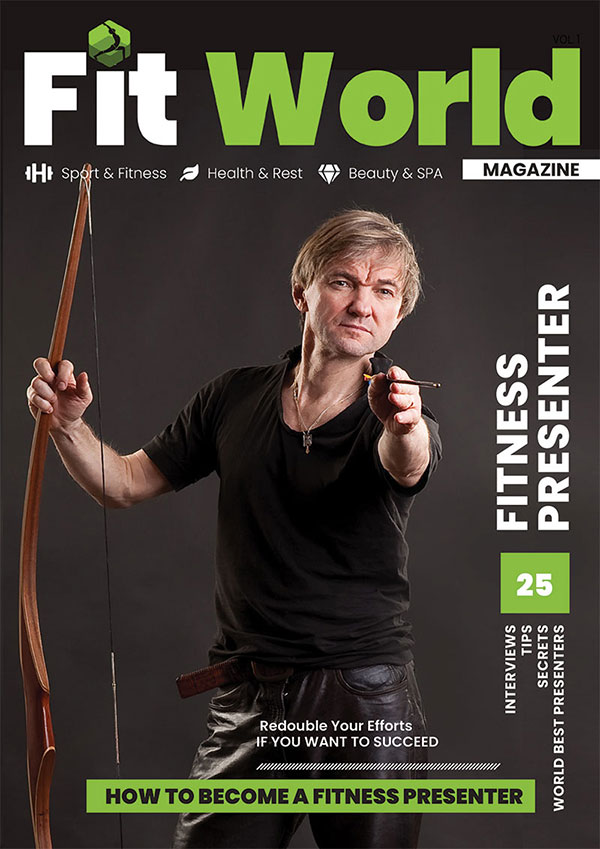If you have decided to start fitness classes, you need to understand a few basic rules that will help you get into a rut and not lose the desire to train.
- Do not expect quick results: the first effect will be noticeable in one and a half to two months.
- Exercise in moderation: intensive and frequent workouts not only will soon come to naught, but can undermine your health instead of improving it.
- Exercise correctly, learn to feel your muscles, to control them.
- 4. Observe safety techniques, read the rules of their performance beforehand.
Important! The most traumatic exercises are power and squats, because of the load on the knee joint. Perform them without making sudden, jerky movements.
- Exercise should not be exhausting, but regular – every other day or 4 times a week. Daily workouts do not allow the muscles to recover. In free days you can take up another sport, for example, running or tennis. The duration of exercise depends on the level of training and health: for beginners the training time is 30-40 minutes a day, for experienced – up to 1.5 hours.
- Do not forget to use insurance and equipment provided in some types of exercises.
- Perform a warm-up before starting exercises – it may be rotational or swinging movements, stretching.
- Monitor your state of health: do not overexert yourself, if your condition worsens, stop the training immediately.
And the last piece of advice: when you start exercising, be sure to set yourself up for a positive result – then everything will work out.
Basic exercises for weight loss
Fitness classes involve various positive effects on the state of the body. One of the important components is the loss of excess weight. What exercises promote weight loss?
– Burpee. An exercise that involves all muscle groups. A few minutes of performance for weight loss is more effective than an hour of cardio training.
– Aerobics (running, dancing, aqua aerobics). During exercise, the consumption of oxygen, which breaks down fats, increases.
– Strength training is too energy-consuming, which means that it burns a lot of calories.
– Squats in several approaches (20 seconds of work – 10 rest) allow you to burn about 60 calories in 4 minutes.
– Jumping rope. 10 minutes of “child’s play” in terms of energy consumption replace running for 1.5 kilometers.
Basic exercises for basic muscle groups
Basic exercises targeting all muscle groups are beneficial for both beginners and seasoned athletes. These foundational workouts ensure the correct performance of various strength exercises and offer lasting benefits that persist even after a brief pause in training. To enhance your gym experience, consider investing in a спортивний рушник з мікрофібри. Such a towel is perfect for managing sweat during intense sessions and is a must-have for anyone serious about their fitness regime.
Neck
– Flexion and extension of the neck while lying on a bench.
Shoulder girdle
– Front dumbbell lift; Standing extension.
– Arm curl on trainer.
– Upper block front thrusts.
– Push-ups from floor.
Arms
– Arm bending and straightening with dumbbells while lying.
– Flexion with handle of lower block.
– Arms extension with dumbbell from behind head.
– Reverse push-ups.
Chest
– Dumbbell press and extension lying prone.
– Press in a special simulator for the upper part of chest.
– Push-up from knees.
– Hands moving on an exerciser.
Back
– Rowing.
– Lumbar stretches.
– Dumbbell bent-over dumbbell pull.
– Extension on loops in a block.
Abdomen
– Lifting torso on a bench.
– Twisting on a Fitness Ball.
– Body curl on floor.
– Lifts of knees in hanging position.
– Side bends.
Glutes
– Squats with dumbbells.
– Lift pelvis with one leg.
– Lift pelvis in prone position.
– Bridge.
– Back and side flips of leg.
– Leg extension on machines.
Hips and legs
– Flexion of legs while lying, sitting, standing.
– Lower back arch with straight back.
– Legs getting together sitting.
– One- and two-legged raises while standing.
– Extension of the shin in a sitting position.
These are the basic of the basic exercises that you should master to start working with your body.
Training at home
You do not need special programs for classes at home, you should only master the basic programs and exercises aimed at weight correction and the formation of a beautiful figure. For home fitness suit flexibility exercises, running, walking, aerobics and strength exercises. Instead of lying in front of the TV for hours, it is better to use this time for good.
The advantages of home exercises are that they are independent of the gym’s opening hours and save money. Cons – at home you don’t have the same conditions and machines that you would find in a gym, but the main disadvantage is that you have no trainer to supervise the process. And it is very difficult to motivate yourself to increase loads.
Group training in a fitness club
Group fitness classes are held under the guidance of a coach and are aimed mainly at weight loss. This type of training has advantages and disadvantages. The pluses of group training include the following points:
– The variety of fitness programs and simulators: you do not have to invent anything, but only choose a ready-made set of exercises;
– a competitive spirit that motivates to new achievements;
– The presence of a coach who supervises the process.
Such classes are good for beginners, for whom the gym is a hostile alien world: the group will tell and explain everything. But exercising in groups also has disadvantages: the lack of an individual approach and, as a consequence, the possibility of overfatigue or get injured; dependence on the opening hours of the gym. If exercise ceases to be effective, no one will bother to change the program. Training will go at the same pace, and the lack of change for the better – it’s boring and ineffective.
Who is contraindicated to fitness
A lot has been said about the benefits of fitness, but there are situations where such physical activity is not recommended and can even harm. We are talking about people for whom fitness classes are contraindicated for medical reasons. There are diseases in which fitness of any kind is not allowed:
– mental disorders, epilepsy;
– Severe lesions and heart disease;
– cancer;
– chronic diseases of the liver, kidneys;
– diseases of the respiratory system;
– diabetes mellitus;
– severe craniocerebral injuries and spinal cord injuries.
Temporarily the doctor may prohibit visiting the gym after an infectious or inflammatory disease and a weakened immune system. In other cases, there may be contraindications associated with certain types of fitness.














